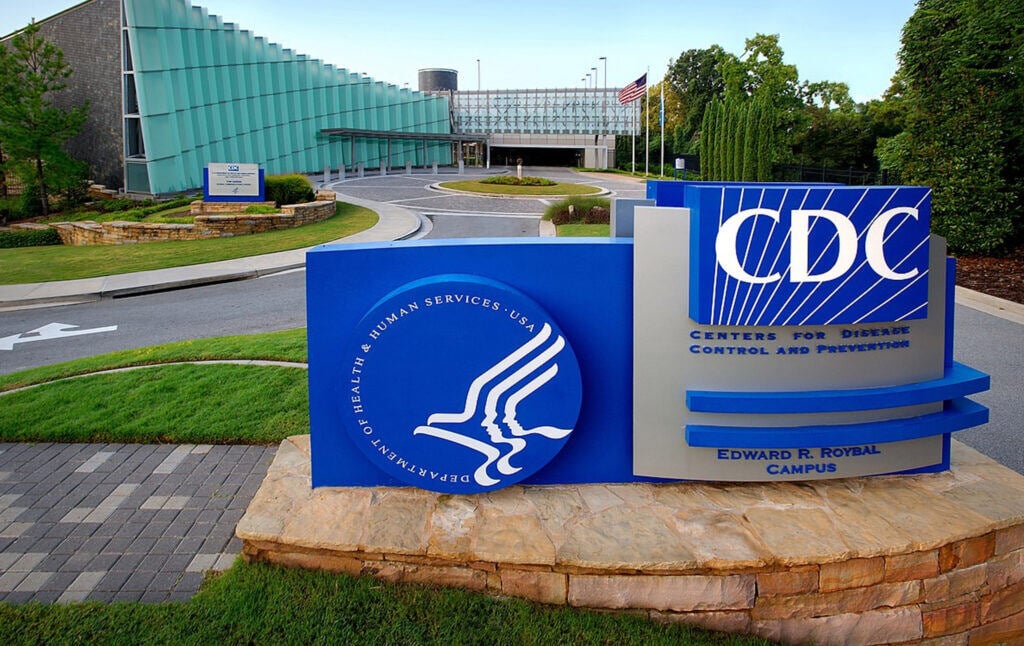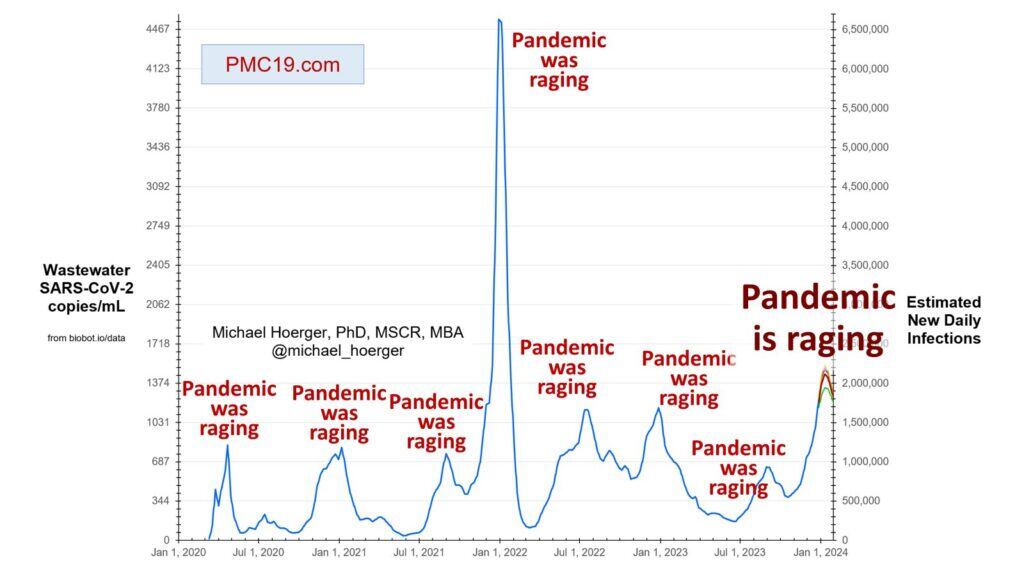
COVID-19 is Still a Threat. So is Biden’s CDC.
The pandemic is not actually over, and pushing people to work while they’re still sick is despicable.
This article was expanded from an item in the Current Affairs Biweekly News Briefing. Subscribe today!
On March 1, the Centers for Disease Control and Prevention (CDC) made a pretty astonishing—and dangerous—announcement. In a major adjustment to its guidelines around COVID-19, the agency said that people who test positive for the disease no longer need to self-isolate for 5 days, as it had previously recommended. Instead, the CDC now says people can “go back to [their] normal activities” as long as their “symptoms are getting better overall,” and as long as they “have not had a fever” for at least 24 hours. In other words, the CDC is explicitly saying that it’s okay for people who are still sick to go into their workplaces and work their usual shifts, if they take “added precautions.”

This is just the latest in a long series of disturbing moves from the CDC, and the logic behind the agency’s decision falls apart the moment you start to poke at it. What, for instance, does “better overall” even mean? If someone has a horrible hacking cough on Tuesday, but it’s somewhat less severe on Wednesday, does that mean they’re “getting better overall” and should go to work? Under the new guidelines, an employer could argue that it does. But the person would still be infectious, and still pose a health risk to everyone around them. As epidemiologist Eric Feigl-Ding has noted, the guidelines are “clear as mud” and “CONFUSING & VAGUE ON PURPOSE,” with a “myriad of loopholes and subjective interpretations” employers can use to push workers into unsafe situations. In a striking rebuke, the National Nurses United labor union has condemned the new guidelines, with President Jean Ross (a registered nurse herself) saying that she’s “deeply disheartened to once again see the CDC weakening protections for public health.”
To justify the change, the CDC makes a few basic arguments. (Or rather, excuses.) First, it says that “We have more and better tools and protection to fight serious respiratory illness” than before, including vaccines and medicines like Paxlovid. It then goes on to claim that “COVID-19 health impacts are now increasingly similar to other respiratory viruses, like flu.” But neither of these statements is exactly true. In the first place, having better medications and other methods to treat a medical condition does not logically mean we should stop trying to avoid the condition in the first place. Just because you have burn gel and bandages in your cupboard, it doesn’t mean it’s okay to slap your hand down on a hot frying pan. Meanwhile, where “health impacts” are concerned, it would be more accurate to say they aren’t fully understood. Nobody knows exactly how damaging “long COVID” —which has affected at least 6.9 percent of U.S. adults—can be to the human body, because nobody’s had to deal with the virus and its aftereffects for longer than a few years. The evidence we do have, though, is worrying. Some studies show that COVID-19 literally causes brain cells to fuse together, possibly leading to cognitive damage of unknown extent. In its own materials, the Cleveland Clinic emphasizes that COVID infection can lead to a higher risk of heart attack, “even in people who have mild cases.” It’s nasty stuff, and certainly not just a mild case of the flu.1

The most important basis for the modified guidelines, though, is something even simpler: the idea that COVID “is no longer the emergency that it once was.” This is both an extremely widespread idea, and one that has more to do with politics and ideology than it does material reality. It’s President Biden who first started to push it in September 2022, when he went on 60 Minutes and declared that “the pandemic is over.” As even the New York Times pointed out, 400 people were still dying every day when he said that. Today, it’s still fundamentally a lie. The pandemic may have reduced in severity from its peak, but it never actually ended—certainly not for the thousands of people who continue to catch the virus, get severely sick, develop symptoms of Long COVID, and even die.
In fact, the winter of 2023 and 2024 has seen one of the most significant spikes in COVID numbers to date. Most of these came from JN.1, the latest major variant. On January 5, JN.1 was estimated to account for 61.6 percent of COVID cases nationwide; as of March 1, that figure has increased to 93 percent. And the case numbers translate directly into hospitalizations: in the last week of December 2023 alone, there were 34,904 new hospital admissions for COVID, the highest number since the previous January. But that didn’t stop Joe Biden from boasting on January 4 that “When I came to office, the pandemic was raging,” implying that thanks to his general wonderfulness, it no longer is. In response, Dr. Michael Hoerger—an assistant professor at the Tulane School of Medicine, who helps run the Pandemic Mitigation Collaborative—skewered Biden with this graph showing the country’s wastewater data:

Wastewater data is exactly what it sounds like: information gathered from analyzing sewage. It’s less precise than other ways of calculating COVID data, because it’s impossible to tell exactly how many people produced a given volume of wastewater; some estimation is involved. But the method also has advantages. As the CDC itself notes, it provides a “community-level perspective on what diseases are circulating,” and it’s not dependent on individuals’ decisions to get tested. Not everyone will voluntarily take a COVID test, for a wide variety of reasons, but everyone uses a toilet. (Well, almost everyone. There are always the mavericks.) And as you can see from Dr. Hoerger’s graph, the January 2024 spike was the second largest of the entire pandemic to date. Not only is the crisis not over, but there were recently more infections than all but one previous point in time! Even today, the rate of COVID detected in U.S. wastewater is ranked as “high” on the CDC’s own website—the same website where they insist it’s okay to go to work while you’re still sick.
Instead of taking sensible steps to protect people, the Biden government has been following a course of action first recommended by Donald Trump, who famously said that “If we stop testing right now, we’d have very few cases.” In October 2022, the CDC stopped issuing daily updates on COVID case numbers. In May 2023, the agency officially declared the public health emergency over. The latter decision eliminated the requirement for insurance companies to cover at-home tests at no cost to the patient, and the government also stopped covering the cost of COVID tests through Medicare. Biden took Trump’s advice. He stopped testing, or at least made testing a lot more difficult.2
All of these measures were guaranteed to give the impression that the threat of infection was over, regardless of the reality, and accelerate the country’s “return to normal”—which really should have been Biden’s campaign slogan all along. If you’re utterly cynical, the strategy makes perfect sense. It allows you to create a narrative where “the pandemic was raging” under Trump, the Bad President, and then it calmed down and went away as soon as the Good Liberal came along. The little detail that it isn’t true, and that your negligence and deceit will almost certainly get people killed, is irrelevant as long as it helps you win reelection.
It’s worth remembering, too, that the CDC has sold out the U.S. working class before. At one point, their guidelines for COVID isolation stated 10 days as the appropriate number—but then the airline industry pressured them to reduce it to 5, citing concerns about “labor shortages,” and they obeyed. The precedent is there. Removing isolation entirely is just another step down the same road. It doesn’t take a genius to see that this new development is all about getting people back to work quicker, boosting productivity and corporate profits—and by extension, the perceived success of “Bidenomics” in an election year. But viruses don’t care about Democratic Party politics. They just spread, and mutate, and kill.
COVID is still an active threat—but so is Biden’s CDC, and its wildly irresponsible policies.3 We need an entirely different kind of leadership, oriented toward the needs of ordinary workers and citizens, not corporations and political parties. We need leaders who actually believe in public health and the health of the collective. The Biden administration should never have allowed important protections like free at-home COVID tests to expire; having done so, it needs to reinstate them. Some hospitals have already brought back mask mandates, but that should be all facilities that offer healthcare in-person. (It’s probably not an overstatement to say that the lack of basic precautions like masking in healthcare institutions ought to be considered outright criminal—at the very least, it is clearly unethical.) In a bizarre Vox article, Dr. Keren Landman attempts to justify the CDC’s new return-to-work push by saying that “workers often don’t have paid sick leave and emergency child care”—but the government can, and should, simply mandate that employers must provide those things. In the meantime, while the Biden administration denies reality, it’s necessary to be careful. If you get a weird cough, take a test. If you feel it’s appropriate to wear a mask or carry a little bottle of hand sanitizer, don’t hesitate to do it. Someone might look at you funny, but that’s better than coughing up lung fluid in a hospital bed.
Most of all, people who test positive for COVID need to resist any effort by employers to force them back into the workplace while they’re still sick, and their co-workers who aren’t sick need to support them in that. Everyone’s safety is on the line, but there’s strength in numbers. If there’s a mass refusal to go along with this agenda, it can’t be carried out. Walk off the job, or go on strike over it if you have to. It’s that serious.
It’s also worth remembering that the flu is not your friend, either. Influenza can cause all kinds of serious complications like pneumonia or other dangerous infections; research suggests that with the flu there is also an increased risk of conditions like heart attacks and strokes. So when the CDC says that COVID is “like” the flu, they’re not exactly helping their case that fewer precautions are needed. ↩
His administration has undermined the country’s ability to accurately test for COVID in other ways, too. In 2023 it turned out that many of the free at-home tests provided through the U.S. Postal Service were already expired, which the FDA solved by just “extending” the expiration dates. But as UC Davis professor Nam Tran explains, the chemical components in COVID tests “degrade” over time—the older the test, the less likely it is to give an accurate result. ↩
Remember when the CDC Director, Mandy Cohen, put out videos online in 2023 about Covid “tools” which emphasized handwashing and other measures yet completely left out masking? ↩




